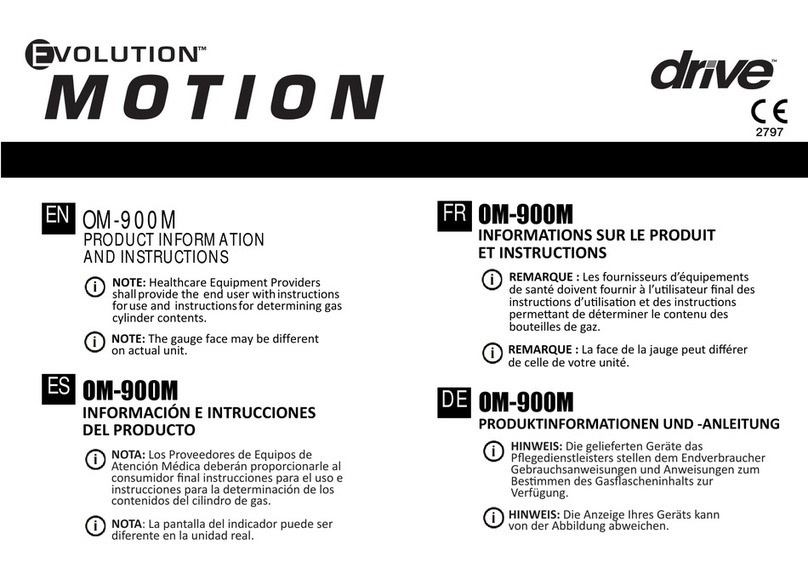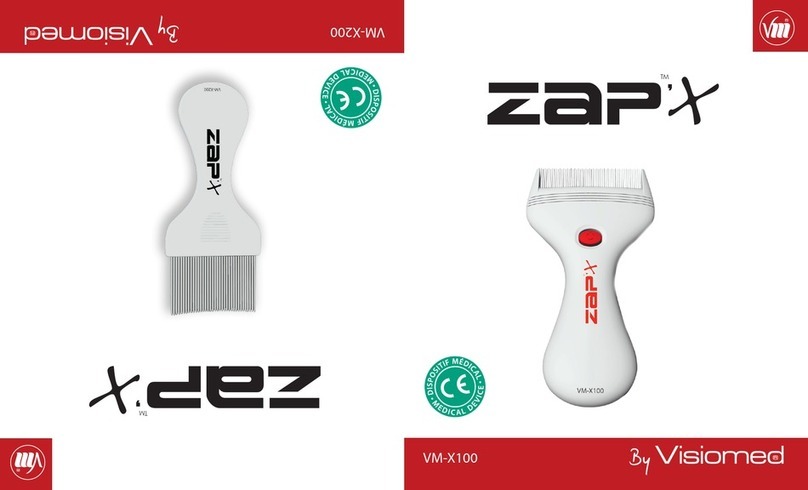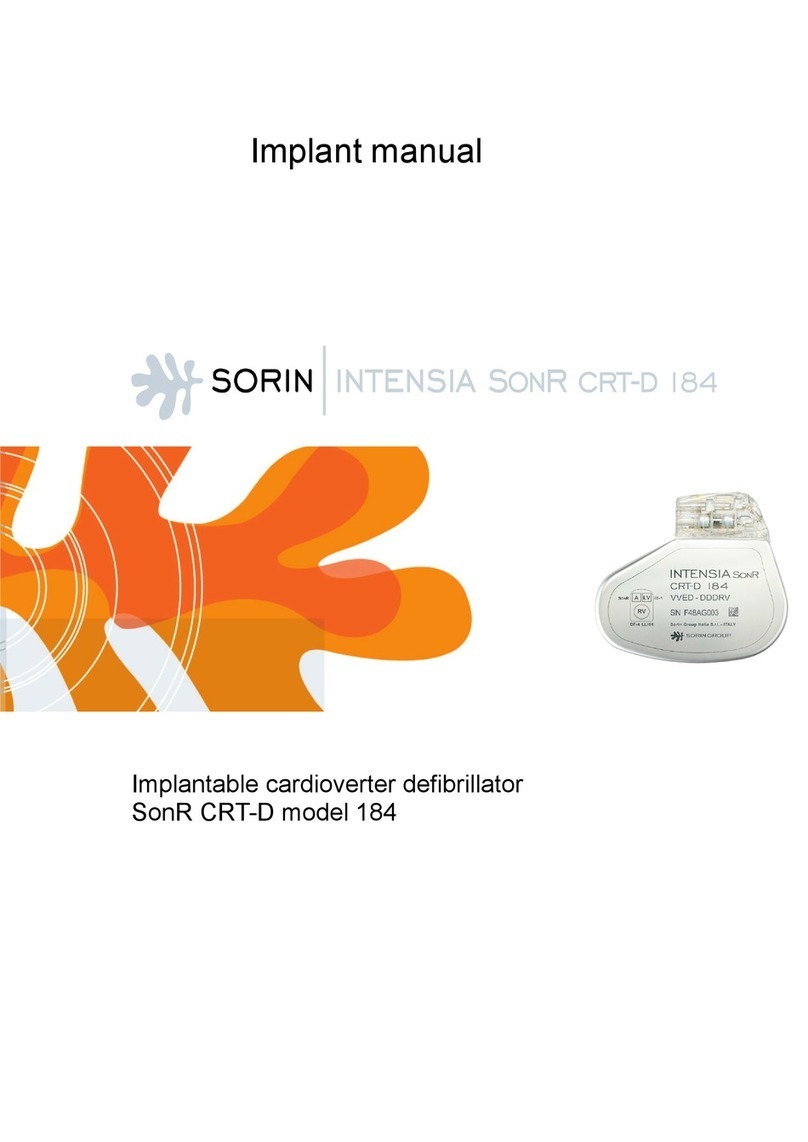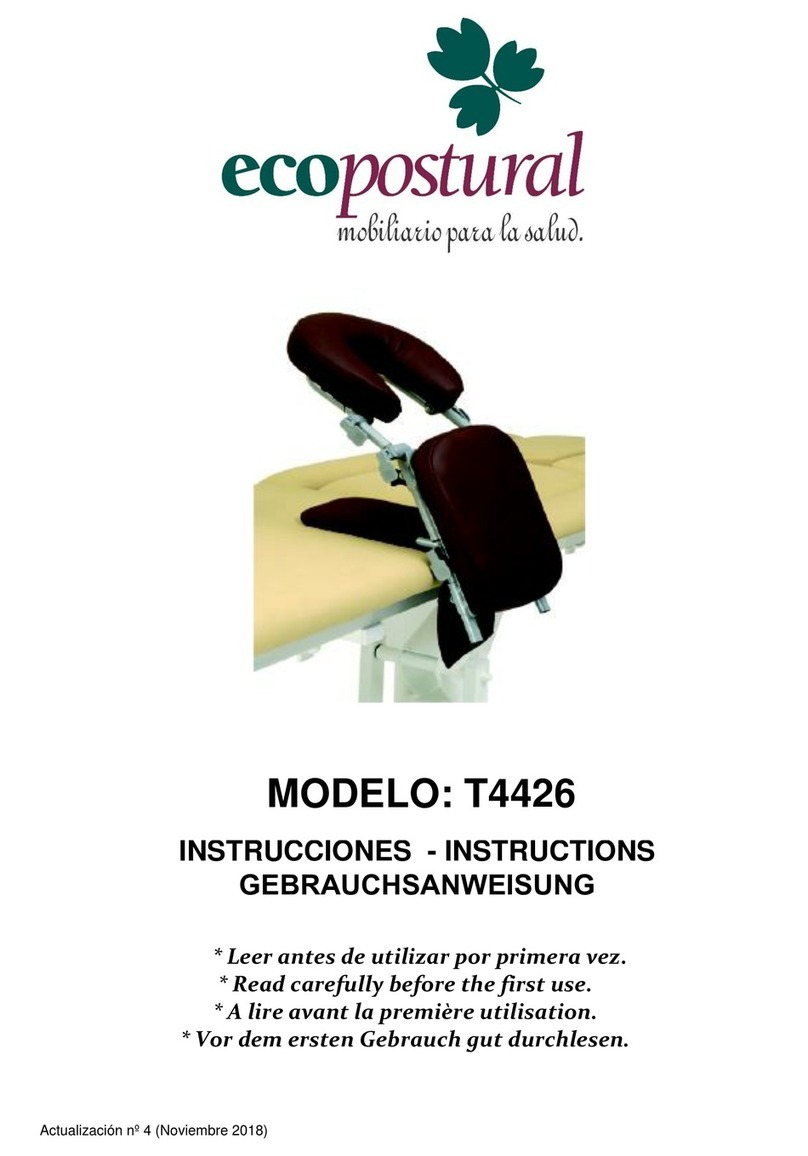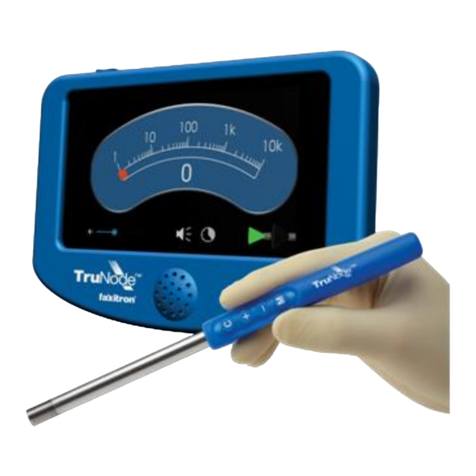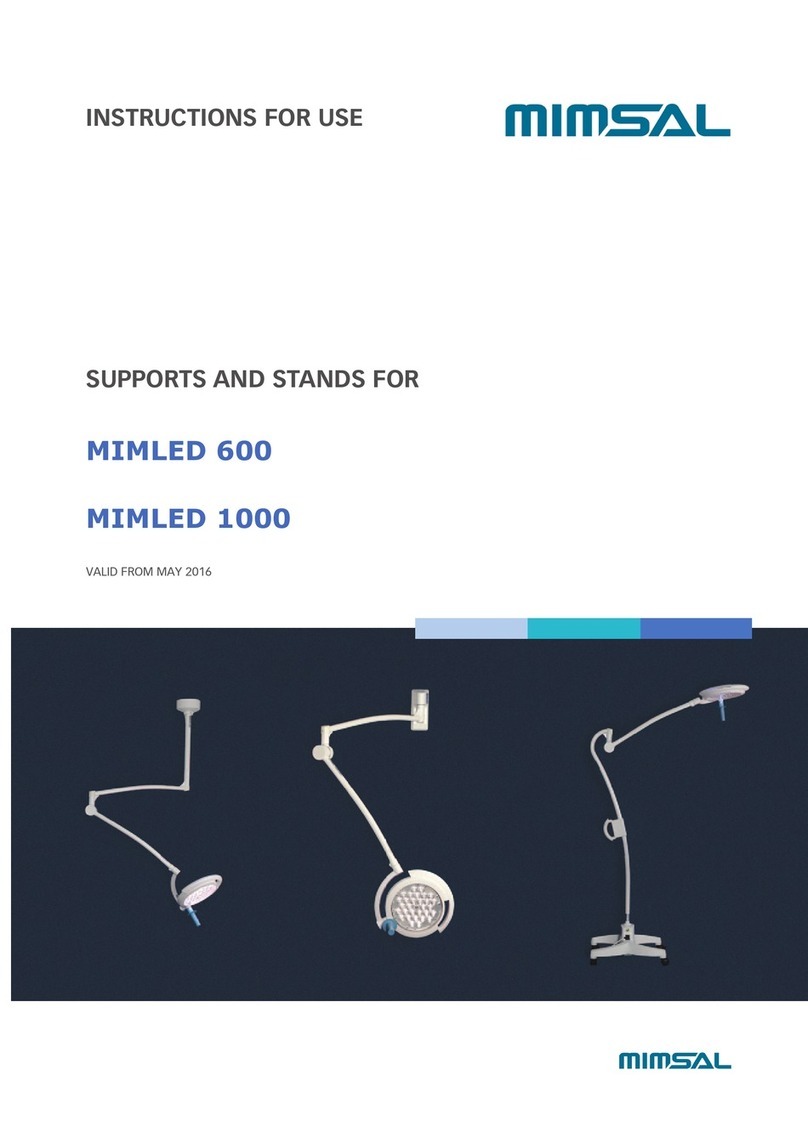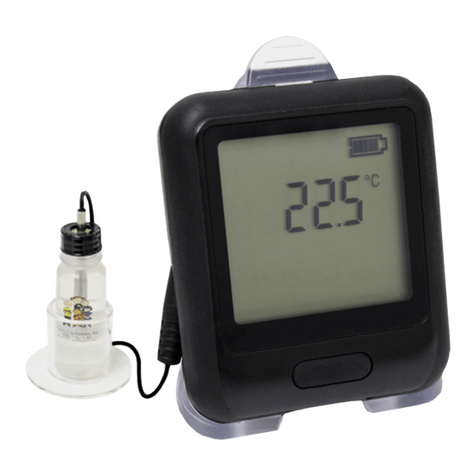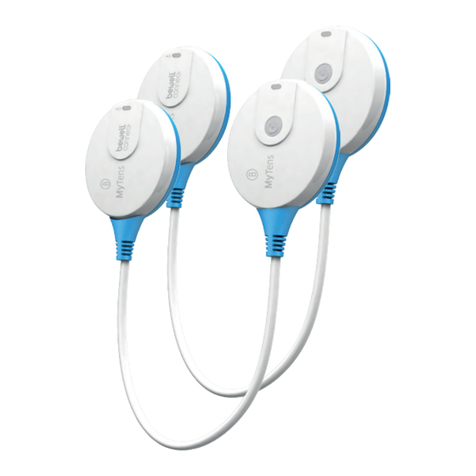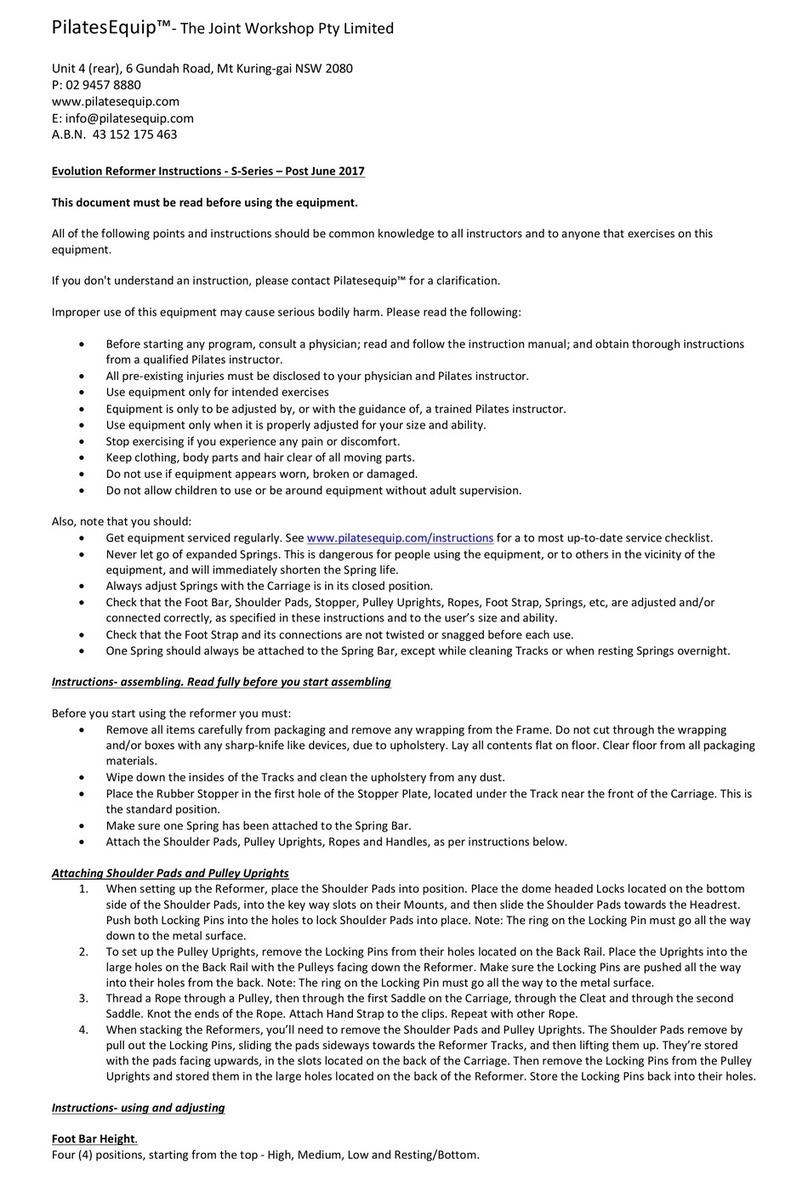Evolution OM-924 User manual

Evolution
OXYGEN CONSERVER
TM
NOTE: Healthcare Equipment Providers shallprovide the end user withinstructions for use and instructionsfor
determining gas cylinder contents.
HINWEIS: Die Anbieter medizinischer Geräte stellen dem Endverbraucher Gebrauchsanweisungen und Anleitungen
HINWEIS:
OM-924 PRODUKTINFORMATIONEN UND -ANLEITUNG
OM-924
PRODUCT INFORMATION AND INSTRUCTIONS
NOTE: The gauge face may be different on actual unit.
EN
DE

•
•
TABLE OF CONTENTS
IMPORTANT INFORMATION TO RECORD
3
3
7
8
8
9
Technical Description.................................................................
Electromagnetic Compatibility Information.................................
Pneumatic Diagram....................................................................
Important Information to Record.......................................................2
Symbol Definitions............................................................................
Important Safeguards, Dangers, Warnings and Cautions...............
Introduction........................................................................................
Intended Use.............................................................................
Contraindications.......................................................................
Important Parts..................................................................................
Standard Product.............................................................................
Setting up Your Conserver...............................................................
Assembly and Use..................................................................
Setup......................................................................................
Inspection Before Each Use....................................................
Checking for Leaks..................................................................
Operating Instructions......................................................................
17
17
18
19
19
19
21
21
22
22
22
23
24
25
26
11
11
12
13
15
15
16
Disassembly Instructions...................................................................
Caring for Your Conserver................................................................
Troubleshooting...................................................................................
Oxygen Cylinder Duration..................................................................
Information for Home and Healthcare Providers................................
Disinfection Between Patients..................................................
Disinfection Intervals.................................................................
Maintenance...............................................................................
Calibration..................................................................................
Limited Warranty.......................................................................
Disposal Instructions.................................................................
Specifications.............................................................................
2
27
ENGLISH ...............................................................................................................................................................................
DEUTSCH ............................................................................................................................................................................
2
Home Care Provider's Name: __________________________
Notes: ______________________________________________
____________________________________________________
____________________________________________________
Physician's Phone Number: (______)______________________
Physician's Name: ____________________________________
Home Care Provider's Phone Number: (______)____________
During Exercise: _______________________________
At Rest: _____________________________________
Prescribed Oxygen Flow Setting:
Date You Received Your Unit: _________________________
Your Name: _______________________________________

No Smoking
Use no oil or grease
Keep away from open flame
Consult accompanying documents
Humidity Limit
Temperature Limits
Serial Number
Catalog Number
Manufacturer
cf
WARNING!
CAUTION!
NOTE!
Consult Instructions for Use
Use No Oil (on gauge face)
Continuous flow
DANGER!
SYMBOL DEFINITIONS
IMPORTANT SAFEGUARDS, DANGERS, WARNINGS AND CAUTIONS
Type BFApplied Parts
Date ofManufacture
Contains Natural
Rubber Latex
Danger indicates an imminently
hazardous situation which, if not
avoided, will result in death or serious
injury.
Warning indicates a potentially
hazardous situation which, if not
avoided, will result in death or serious
injury.
Caution indicates a potentially
hazardous situation which, if not
avoided, may result in property
damage or minor injury or both.
Gives useful tips, recommendations
and information for efficient,
trouble-free use.
CE Marking of
Conformity
MR Unsafe – Unsafefor Magnetic
Resonance Environment
EC REP
European
Representative
Read and understand this manual before operating your oxygen conserving regulator.Important safeguards are indicated
throughout this guide. Pay special attention to all safety information. Any serious incident that has occurred in relation to the
device should be reported to the manufacturer and the competent authority of the Member State in which the user and/or
patient is established.
Prescription Only
Keep dry, protect the device
from moisture
NOTE: These symbols may be used in
the user manual and also on the
device, packaging and other material.
3
2797

•
•
•
•
•
•
•
•
•
WARNING:Warning indicates a potentially
hazardous situation which, if not avoided, will
result in death or serious injury.
DANGER: Danger indicates an imminently
hazardous situation which, if not avoided,
will result in death or serious injury.
The oxygen delivery setting has been determined foreach
patient individually with the configuration of the
equipment to be used, including accessories.
If you feel discomfort or are experiencing a medical
emergency, seek medical assistance immediately to
avoid harm.
Geriatric or any other patient unable to communicate
discomfort may require additional monitoring to avoid
harm.
The settings of this device may not correspond with
continuous flow oxygen.
•
This device is not intended to be used during sleep or by
patients who breathe more than 40 breaths per minute or
consistently fail to trigger equipment.
Wind or strong drafts can adversely affect accurate
deliveryof oxygen therapy.
The use of oxygen requires a prescription
from a physician or other appropriately licensed
healthcare practitioner.
Avoid creation of any spark caused by any type of
friction, near oxygen equipment.
If you intend to smoke, you must always turn the
oxygen conserver off, remove the cannula and
leave the room where either the cannula or
oxygen conserver is located.
•
•
Oxygen will not burn; however, it does vigorously
accelerate theburning of any flammable material.
•
•
Not suitable for use in the presence of flammable
anesthetic mixture with air, oxygen or nitrous
oxide.
Do not lubricate replaceable fittings, connections,
tubing or other accessories of the oxygen conserver
to avoid the risk of fire and burns.
Be sure to turn off the oxygen supply by setting theflow
control knob to "PULSE"when not in use.
Never use aerosol sprays near the equipment.
open flames.
Oxygen makes it easier for a fire to start and spread.
Do not leave the nasal cannula onbed coverings or
chair cushions. If the oxygen conserver is turned on
but not in use,the oxygen will vigorously accelerate
the burning of any flammable material. Turn the
oxygen conserver off when not in use.
equipment and therapy.Do not use near sparks
There is a risk of fire associated with oxygen or
Never use oil, grease or petroleum-based products
on or near the system to avoid the risk of fire and
burns. Wash and dry hands before operating oxygen
equipment. Use only water-based lotions orsalves.
Under certain circumstances, oxygen therapy can be
hazardous. Seek medical advice before using an
OM-924 electronic oxygen conserver.
Oxygen flow is only present when the flow indicator is
clicked into place. No oxygen will flow if the knob is
setbetween liter flow settings.
Use of this device at an altitude above 9,800 ft.or
an
outsidetemperature of104° F is expected to adversely
affect accurate delivery of oxygen
therapy.
Smoking during oxygen therapy is dangerous and is
likely to result in burns or death.Do not allow
smoking or open flames within the same room of
the oxygen conserver or any oxygen carrying
accessories.
4

The conserver must:
WARNING (Cont.)
Always maintain a backup supply of oxygen (i.e.
compressed cylinders and regulator).
• •
•
•
•
•
•
•
•
•
•
•
•
•
•
•
•
WARNING (Cont.)
Lint and dust can contaminate the oxygen path and create a
fire hazard. Keep all oxygen connections clean and free from
lint and dust.
Do not wet the area of the oxygen inlet connection, the
disinfectant residue may create a risk of fire.
Make sure the fill valve, if equipped, is clean and free of
dirt, debris, oil or other contaminants.
Do not submerge the conserver in the disinfectant,
wipe disinfect only.
Be used only after one or more settings have
been individually determined or prescribed for you at
your specific activity levels.
Be used with a specific combination of parts and
accessories (i.e. cannulas, tubing) that meet the
specifications of the conserver manufacturer, and that
were used while your settings were determined.
Your prescribed settings should be periodically reassessed
by a physician or other appropriately licensed healthcare
practitioner for effectiveness of therapy.
Use only parts and accessories recommended by the
manufacturer to ensure proper function and to avoid the
risk of fire and burns.
•
Not intended for use with any humidification devices.
•
Do not attempt to open or remove enclosure. There are no
user-serviceable internal components.
•Not for use with an endotracheal tube or tracheostomy.
Close supervision is necessary when the nasal cannula is
Cannula tubing can pose a strangulation risk and
tripping hazard. Locate tubing away from areas of high
foot traffic and keep children and pets away from cannula
tubing.
used by impaired persons or near children.
•
The proper placement of the nasal cannula in the nose
is critical to the consistent operation of this equipment.
Donot use cannula tubing that is longer than
7 ft. (2.13 m).
To reduce the risk of rapid oxygen recompression and fire,
open the oxygen source valve slowly and completely so the
pressure gauge moves slowly as it indicates the oxygen
source pressure.
•
MR Unsafe. Do not bring the device or accessories into
aMagnetic Resonance (MR) environment as it may cause
unacceptable risk to the patient or damage to the
conserving device or MR medical devices. The device
andaccessories have not been evaluated for safety in an
MR environment.
The settings of other models or brands of oxygen therapy
equipment do not correspond with the settings of the
OM-924 Electronic Oxygen Conserver.
It is unsafe to modify the equipment, and use or
interconnect accessories, detachable parts and
materials not described in the instructions for use.
Before using this unit, make certain that your hands are
freeof oil, grease or other contaminants, and that
thecylinder is secure in an upright position.
5

CAUTION: Caution indicates a potentially
hazardous situation which, if not avoided, may
result in propertydamage or minor injury or
both.
WARNING (Cont.)
•
•
•
Prevent water or any other liquid substances from entering
the unit.
Prevent dust, lint or any small particles from entering the
unit, as these may degrade performance or cause oxygen
leaks.
Do not expose the unit to extreme temperatures or heat
sources such as fireplaces and radiant heaters.
Do not use humidifier bottles.
This product contains natural rubber latex (oxygen
pressure gauge rubber guard) which may cause allergic
reactions.
•
•
•
•
•
•
•
•
•
•
•
•
•
Checking for leaks should be performed before each use.
Do not use the device or accessories in an environment
with electromagnetic equipment such as CT scanners,
Diathermy, RFID and electromagnetic security systems
(metal detectors) as it may cause unacceptable risk to the
patient or damage to the conserving device. Some
electromagnetic sources may not be apparent, if you
notice any unexplained changes in the performance of this
device, if it is making unusual or harsh sounds, discontinue
use. Contact your home care provider. This device is
suitable for use in home and healthcare environments
except for near active HF SURGICAL EQUIPMENT and the
RF shielded room of an ME SYSTEM for magnetic
resonance imaging, where the intensity of
Electromagnetic DISTURBANCES is high.
Use of this equipment adjacent to or stacked with other
equipment should be avoided because it could result in
improper operation. If such use is necessary, this
equipment and the other equipment should be
observed toverify that they are operating normally.
Do not use if leaking or damaged.
Refer repairs to authorized service personnel.
Do not use the flow outlet for driving any medical
equipment.
Portable RF communications equipment (including
peripherals such as antenna cables and external
antennas) should be used no closer than 30 cm (12
inches) to any part of the conserving device. Otherwise,
degradation of the performance of this equipment could
result.
Oxygen supplied by this equipment is supplemental only
and is not intended for life support applications. The
OM-924 electronic oxygen conserver should not be used
to supply anything other thanmedical oxygen.
Remember that in continuous flow mode, the oxygen will
be consumed at a much faster rate. Switch to another
oxygen source before depleting the oxygen cylinder. The
continuous flow funtion on the OM-924 electronic
oxygen conserver is factory preset at 2 LPM.
To help prevent possible damage to the unit and to
maintain its cleanliness, keep the OM-924 electronic
oxygen conserver in a carrying bag. Several bags are
available for use with different cylinder sizes and
configurations: contact your Home Care provider for more
information on carry bags.
Combinations with medical devices other than
recommended can alter the performance of the equipment
(example: combinations with reservoir cannula, extended
length tubing).
6

INTRODUCTION
SAVE THESE INSTRUCTIONS
TM
FIGURE A
Post-Valve Cylinder
When we breathe, approximately one-third of the time is spent inhaling and
two-thirds exhaling. As a result, oxygen delivered by continuous flow is
wasted during exhalation. By eliminating oxygen flow during exhalation, a
two-thirds saving is possible. Additionally, the oxygen available during the
very first part of inhalation contributes most to meeting oxygen needs.
The OM-924 electronic oxygen conserver takes advantage of these facts to
provide maximum efficiency in the delivery of oxygen. This device is
designed to be an integral component of a lightweight, long-lasting
supplemental ambulatory oxygen system.
PURPOSE:
FUNCTION:
TM
TM
This manual provides information necessary to operate the EVOLUTION OM-924 electronic oxygen conserver.This
conserver can be used with DIN 477, No. 9 cylinder connection at home or away from home to provide your
specificoxygen requirements. It requires two (2) 1.5 volt AA alkaline batteries for operation.
7
The EVOLUTION OM-924 electronic oxygen conserver includes a combination of a low-pressure regulator and an oxygen
conserver. It is designed for use with a cylinder as an ambulatory oxygen system and is capable of delivering a specific
amount of supplemental oxygen at the optimal point in the breathing cycle. The EVOLUTION increases the efficiency in the
delivery of oxygen, maximizing the beneficial effects and eliminating unnecessary oxygen waste.

•
The patient is the intended operator.
•
This device is not to be used for life support applications.
This device is not intended for use by patients who breathe more than 40 breaths per minute.
•
This device is not to be used by patients who consistently fail to trigger the device.
•
The device is not for use while asleep.
Funcns
tions that are frequently used include:
TM
TM
CAUTION:Oxygen supplied by this equipment is supplemental only and is not intended for life support applications.
The OM-924 electronic oxygen conserver should not be used to supply anything other than medical oxygen.
USER QUALIFICATION:
Prior to beginning therapy, patients must be given instruction by qualified personnel in how to operate this unit.
Intended Use:
The EVOLUTION Model OM-924 is intended for prescription use only, to be used as part of a portable oxygen
delivery system for patients that require supplemental oxygen up to 7 liters per minute, in their home and for
ambulatory use.
CONTRAINDICATIONS:
• I talling the device by connecting to a portable oxygen cylinder post valve.
• Selecting a prescribed oxygen setting on the selector dial.
• Attaching standard oxygen cannula and tubing to gas port and securing cannula to user.
• Monitoring the pressure gauge for remaining oxygen in cylinder.
• Disconnecting the device from the portable oxygen cylinder.
8
NOTE: The OM-924 electronic oxygen conserver will be referred to as the EVOLUTION in the remainder
of the guide.

IMPORTANT PARTS
TM
The Pulse mode setting is the normal operating mode and pulses oxygen at the rate set by the Selector Button.
The CF mode is a mechanical override designed as a safety feature in
case of battery power failure. When in the CF mode, the user can still
change the LEDdisplay lights by pressing the Selector Button, but it has
noeffect on the oxygen output.
TM
TM
2
3
21
CAUTION
:In the event that it is necessary to operate the unit in the continous flow mode, DO NOT obstruct the flow
of oxygen from the Oxygen Supply Outlet by placing your finger over the outlet or blocking the flow through the
oxygen tubing in any way. Doing so may render the unit inoperable and/or damage the sensor in the unit.
3. Selector Knob: This enables the user to switch between the continuous
flow (CF) mode setting and Pulse mode setting. The continuous flow
mode setting is designed for emergency use only. The amount of
oxygen delivered when using the EVOLUTION incontinuous flow
mode is preset at 2 LPM (liters per minute).
1.Low Battery Indicator Light: The EVOLUTION incorporates a visual
indicator light that alerts you when abattery change is needed.The
following signal will be displayed as your batteries become depleted.
1
Blinking Red Light- Low battery energy level. Replace batteries.
2.Handtight Nut:This is used to attach the unit to any
DIN 477, No. 9 cylinder connection.
CAUTION: Remember that in continuous flow mode, the oxygen will be consumed at a much faster rate. Switch
toanother oxygen source before depleting the oxygen cylinder. The continuous flow function on the EVOLUTION
conserver is factory preset at 2 LPM.
4. Selector Button:This enables the user to select the oxygen dosage setting when the Selector Knob is in the Pulse mode setting.
Press and hold theSelector Button until the appropriate dosage LED display light is illuminated. To checkyour current setting,
press and release the Selector Button.
9
5. Oxygen Pressure Gauge: This enables the user to monitor the contents of the compressed oxygen cylinder.
2
1
3
4
5

WARNING: Fire Hazard
Lint and dust can contaminate the oxygen path and create a fire hazard. Keep all oxygen connections clean and free
from lint and dust.
IMPORTANT PARTS (cont.)
6
6. Battery Holder:This compartment holds two (2) AA-size alkaline batteries.
7.Oxygen Supply Outlet:Use this fitting to attach a standard cannula.
8. DIN 477, No. 9 Cylinder Connection: Interfaces between DIN 477, No. 9 cylinder post and conserver to allow oxygen to
flow into the regulator.
8
10
7

ORDER NUMBER DESCRIPTION
WARNING: Fire Hazard
SETTING UP YOUR CONSERVER
STANDARD PRODUCT
Before using this unit, m
ake certain that your hands are free of oil, grease and other contaminants, and that the
cylinder is secure in an upright position.
NON-PORTABLE USE:
is designed to extend the life of portable oxygen supplies when away from the primary
source. While the conserver may be used with stationary oxygen sources, the unit should be used only
while awake. The conserver is not intended for use while asleep.
The EVOLUTION
TM
• Lint and dust can contaminate the oxygen path and create a fire hazard. Keep all oxygen connections
clean and free from lint and dust.
Conditions in the home healthcare environment that can affect the performance of your device:
WARNING: Fire Hazard
OM-924 Electronic oxygen conserving device with DIN 477, No. 9 cylinder connection
•Degraded sensors due to rough handling, extreme temperatures or humidity can affect the device's
ability to dose oxygen. To avoid this, operate the device within the rated environmental conditions
listedin the Specifications section of this guide.
11

WARNING: Fire Hazard
• Make certain that your hands are free of oil, grease and other contaminants.
ASSEMBLY AND USE
WARNING: Fire Hazard
• Secure the cylinder in an upright position.
• Inspect the valve of the cylinder and the conserver to ensure that they are free of contaminants and damage.
If any indication of damage or contamination is detected, DO NOT use the equipment and contact
your Home Care Provider.
12

MONITORING BATTERY ENERGY LEVEL:
Blinking red light: Low Battery energy level. Replace batteries.
Disposal of Batteries: Do not dispose of used batteries in the household waste. Contact a public waste disposal
authority for proper disposal instructions.
TM
TM
The EVOLUTION is equipped with a low battery indicator light that alerts you when a battery change is needed.
The following signal will be displayed as your batteries become depleted:
TM
TM
A
STEP 3: Rotate the door cover back in place until a “click” is heard.
TM
NOTE: The EVOLUTION is packaged with batteries inside. A special seal is used at the
positive terminal to prevent battery oxidation. If it has not already been removed by
your Home Care Provider, be sure to remove the seal before using the unit for the first
time.
STEP 1: While holding the unit in one hand,
remove the Phillips screw [A] that holds the battery
door in place, then gently press down on the battery door with your thumb and open
the hinge door away from the EVOLUTION label [Figs. C1 and C2].
STEP 2: Drop the batteries into the slot, making sure they are inserted in the proper
direction as indicated by the (+)
and (-) symbols [Fig. C3].
INSTALLING/CHANGING ALKALINE BATTERIES:
SETUP
The EVOLUTION uses advanced technology that prolongs battery
life through efficient power use. With normal use of four (4) hours
per day at any setting, your batteries should last a minimum of 2
years.
Two (2) AA alkaline batteries are packaged in the box with your
EVOLUTION.Follow these easy steps to install or change
batteries when needed:
C1
13
Reinstall the Phillips screw [A] that was removed in Step 1, do not overtighten.
C2
C3

TM
NOTE: Tighten only by hand. The use of a tool to tighten the
handtight nut may damamge the unit.
FIGURE C
Attaching
the EVOLUTION
to the conserver.
ASSEMBLY INSTRUCTIONS:
SETUP (Continued)
STEP 3:
A
ttach a standard cannula
(7 ft. [2.13 m] or less in length)
to the oxygen
supply outlet. See Figure D for an illustration demonstrating the proper
positioning of the nasal cannula.
14
STEP 1: Line up conserver connection and handtight nut with cylinder
connection valve.
STEP 2: While holding unit in place, tighten handtight nut clockwise firmly
until it stops (see Fig. C).

•
•
If the needle remains in its position, there is no leak and the device is ready for use.
However, if the contents indicator shows a continuous decrease in pressure, there is a leak in the system.
In this event, contact your Home Care Provider.
STEP 4:Ensure that the unit is set to the "PULSE" position.
STEP 1:Close the valve on the oxygen cylinder by turning the valve clockwise.
STEP 2:Depressurize the conserver by inhaling several times using the nasal cannula.
The gauge indicator should drop to zero.
STEP 3:Check that all tube connections are tight. If necessary, tighten them by hand.
STEP 5:Slowly open the valve on the oxygen cylinder by turning the valve counter clockwise until the needle in the
gauge indicator no longer moves.
STEP 6:Close the oxygen cylinder valve again by turning the valve clockwise.
STEP 7:Observe the needle in the gauge indicator for approximately one minute.
CAUTION: This should be performed before each use.
CAUTION: Do not use a tool.
CHECKING FOR LEAKS:
WARNING: Fire Hazard
If any of these conditions exist, DO NOT use the cylinder and contact your healthcare provider for
areplacement cylinder.
STEP 2: Check the flow selector knob to be sure it rotates and stops at each setting.
STEP 1: Examine the outside of the cylinder and regulator assembly fordebris, oils or grease and noticeable signs of
damage, dents or dings, corrosion, excessive heat or fire damage, pressure leak or any other sign of damage
that might cause a cylinder to be unacceptable or unsafe for use.
INSPECTION BEFORE EACH USE
15

OPERATING INSTRUCTIONS:
TM
TM
TM
TM
STEP 1: Make sure that the EVOLUTION selector knob is set to
the “
PULSE
” position before opening the oxygen source
valve. Battery saving technology has eliminated the need for an "OFF" position. The unit will go to "Sleep Mode"
after three minutes of non-use. The unit will turn on again when an inspiration is detected or the Selector Button
is pressed.
STEP 4:To select the setting on the EVOLUTION (1-7) that corresponds to the appropriate delivery setting, press and
hold the Selector Button until the appropriate dosage LED display light is illuminated.
NOTE: To check your current setting, press and release the Selector Button in the center of the
Selector Knob.
CAUTION
: To help prevent possible damage to the unit and to maintain its cleanliness, keep the
EVOLUTION
in a carrying bag. Several bags are available for use with different cylinder sizes and configurations: contact your
Home Care provider for more information about carry bags.
s
o the pressure gauge moves
slowly as it indicates the source pressure.
STEP
3
:Check the oxygen pressure gauge to verify that the oxygen cylinder pressure is within the operating range.
WARNING: Fire Hazard
To reduce the risk of rapid oxygen recompression and fire, open the oxygen source valve slowly and completely
STEP 6:Properly position the cannula with the nasal prongs facing upward and insert the prongs
into nose. Wrap the cannula tubing over the ears and position in front of body
STEP
5
:
Ensure cannula is properly attached to the EVOLUTION conserver.
The conserver will now start to deliver oxygen. The amount of oxygen delivered per pulse is
determined by the setting. A sound may be heard each time the unit delivers a pulse of oxygen.
Adequate saturation will be achieved because of the precise time in the breathing cycle in which
the pulse of oxygen is delivered.
FIGURE D
(
see Fig. D).
STEP 2:If a leak is present (see "Checking for Leaks" section above), close the oxygen cylinder valve, check the o-ring
on the connector and reinstall. If the leak persists, DO NOT USE THE EQUIPMENT. Contact your Home
Care Provider for repair or replacement.
16

TM
CARING FOR YOUR CONSERVER
TM
TM
TM
STEP 7:When finished using the system, close the oxygen cylinder valve and continue breathing through the
nasal cannula until no further oxygen is detected and the gauge reads “empty”.
DISASSEMBLY INSTRUCTIONS:
To remove the EVOLUTION from the oxygen cylinder:
WARNING: There are no user serviceable parts. Do not attempt to service the device while it is in use.
STEP 6: Store in a clean, dry location.
STEP 8: Remove the nasal cannula.
STEP 9: When not in use, store in a clean, dry location.
Do not expose the unit to water, such as when bathing or swimming.It is advisable to keep the system in its
carrying bag to afford a degree of protection. Clean the outside of the unit periodically with a clean, lint-free
cloth.To remove heavy soil, wipe unit using a lint-free cloth, dampened with clean water, then dry unit with
clean, dry, lint-free cloth. Pay special attention to the oxygen outlet to make sure it remains free of dust, etc.
STEP 1: Close the oxygen cylinder valve by turning the valve clockwise.
STEP 2: Deplete residual pressure in the conserver by continuing to breathe through the nasal cannula or by setting the
conserver to continuous flow mode until no further oxygen is detected and the gauge reads "empty".
STEP 3: Remove the nasal cannula from the EVOLUTION and turn the selector switch to the "PULSE" position.
STEP 4:While holding the unit in place, slowly loosen the handtight nut by turning counter-clockwise
(see Fig. C).
STEP 5: Pull the unit away from the cylinder post.
The EVOLUTION should be kept clean and free from moisture and dust, as well as extreme temperature.
Clean the EVOLUTION once a week by wiping the outer surface and oxygen outlet port with a clean, dry cloth.
Do not use oil or products containing oil.
OPERATING INSTRUCTIONS (Continued):
17

TROUBLESHOOTING
NOTE: Do not attempt to open the unit. If the unit is opened or tampered with, the warranty is void.
Short battery life.
Make sure battery polarity is correct.
Batteries installed incorrectly (reversed).
Unit does not pulse.
Software needs to be reset
.
Open the battery door and remove the batteries.
Wait 10 seconds. Replace the batteries and close
the battery door.
Dead batteries
.
Replace batteries.
Dirty battery holder contacts. Remove the batteries. Use rubbing alcohol and
a cotton swab to clean contacts.
Cylinder valve is closed.
Turn cylinder valve clockwise to open.
Cylinder is empty. Check the oxygen gauge. Replace the cylinder,
if empty.
Oxygen cannula is blocked or kinked. Remove kinks. Clean or replace, if necessary.
Non-alkaline batteries are used. Make sure the batteries inside the unit
are alkaline.
PROBLEM PROBABLE CAUSE SOLUTION
Non-functioning units are subject to warranty provisions and the manufacturer repair/return policy.
If necessary, call your Home Care Provider.
Batteries are faulty. Replace batteries. (See "Installing Alkaline
Batteries" section).
18

OXYGEN CYLINDER DURATION
INFORMATION FOR HOME AND HEALTHCARE PROVIDERS
TM
Because the total delivery of oxygen via the EVOLUTION is related to breathing rates, it is user adaptive. Thetotal oxygen
delivered per minute will automatically adjust with user need, as expressed by increased or decreased breathing rates. For
example, at all settings, twice as much oxygen per minute will be delivered if one breathes twenty (20) times per minute as
compared with ten (10) times per minute. Please refer to the table below as a guide.
•
•
•
-
NOTE: Ensure that the oxygen inlet remains free of dust, etc.
Drive Medical recommends that at least the following procedures be completed by an appropriately trained
individual (i.e., biomedical technician, equipment technician, respiratory therapist, nurse) between uses by
different patients.
STEP 1:Dispose of nasal cannula.
DISINFECTION BETWEEN PATIENTS:
STEP 2: Cleaning Instructions:
Clean the exterior of the device with:
-a clean, lint-free cloth to remove surface dirt and soil.
a clean, lint-free cloth dampened with water to remove heavy soil.
a soft-bristled brush dampened with water to remove stubborn soil.
Dry the device with a clean, lint-free cloth.
-
19

STEP 4: Allow all parts to dry completely before checking for proper operation.
NOTE: There is no portion of the gas pathways through the conserver that could be contaminated with
body fluids or expired gas under normal or single fault conditions.
WARNING: Do not wet the area of the oxygen inlet connection, the disinfectant residue may create a risk of fire.
Do not submerge the conserver in the disinfectant, wipe disinfect only.
STEP 3:Disinfection Instructions:
- Saturate a clean, lint-free cloth with a suitable disinfecting agent (e.g., 1:5chlorine bleach [5.25%] and
water solution) and wipe the exterior of the device.
STEP 5: Check the oxygen conserver for proper operation:
• Press and hold the Selector Button and ensure that each pulse setting can be selected and that each
Dosage LED illuminates.
• Ensure the flow selector knob rotates and clicks into each setting.
• Attach the device.
• Ensure the pressure gauge is working.
• Ensure the flow is working.
• Set the device to each setting, and verify that oxygen pulses.
If the device is operating properly, it is ready to be used by another patient. If the device is not operating properly, the
provider should return the device to Drive Medical for service.
NOTE: Ensure that the device remains visibly wet for ten minutes, with the solution reaching all crevices
and hard-to-reach areas.
20
Table of contents
Languages:
Other Evolution Medical Equipment manuals
Popular Medical Equipment manuals by other brands

Olympic Medical
Olympic Medical BILI-BASSINET 58110 instruction manual
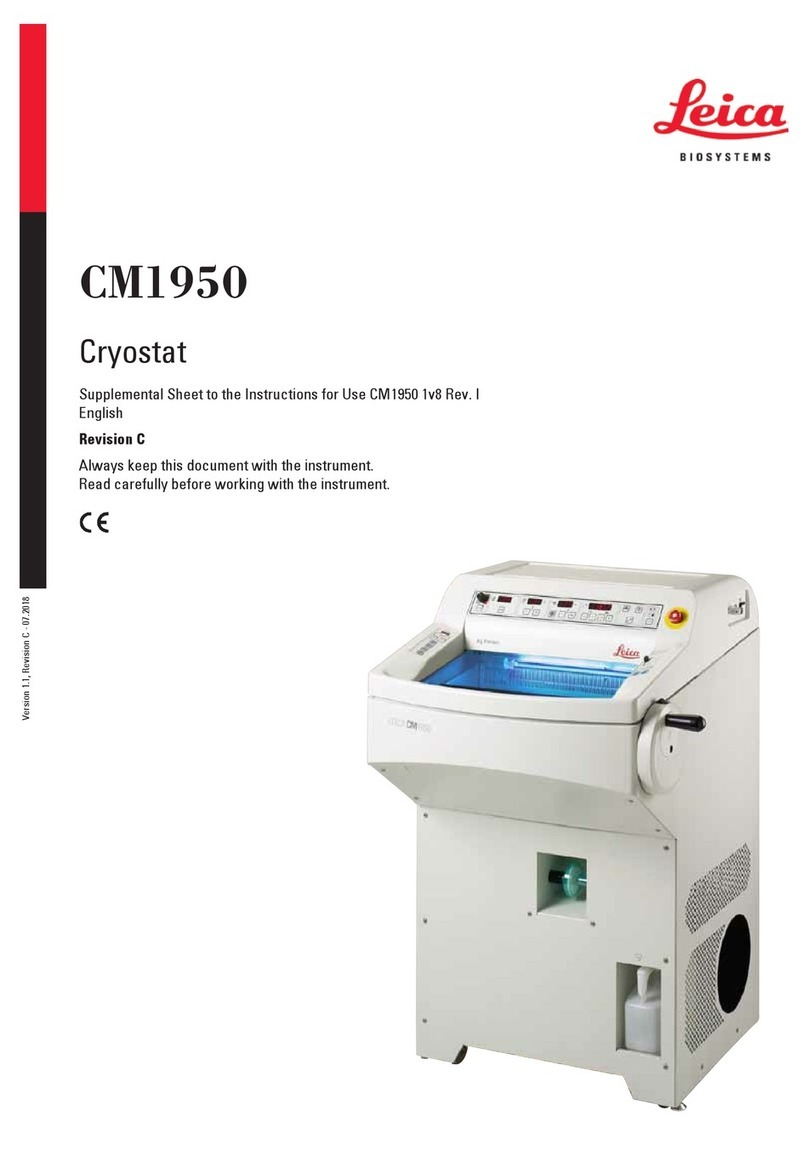
Leica Geosystems
Leica Geosystems CM1950 Supplemental sheet

nCounters
nCounters Portable Angle Monitor Operation manual
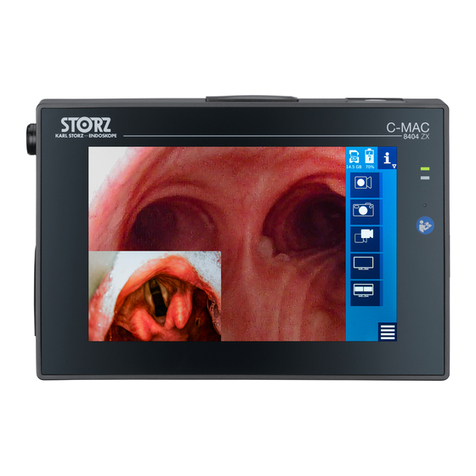
Storz
Storz 8404ZX Instructions for use
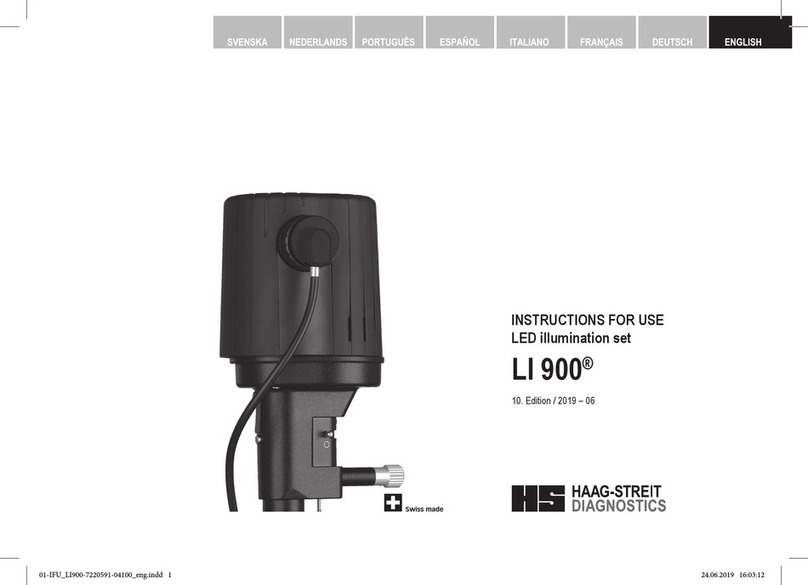
Haag-Streit
Haag-Streit LI 900 Instructions for use
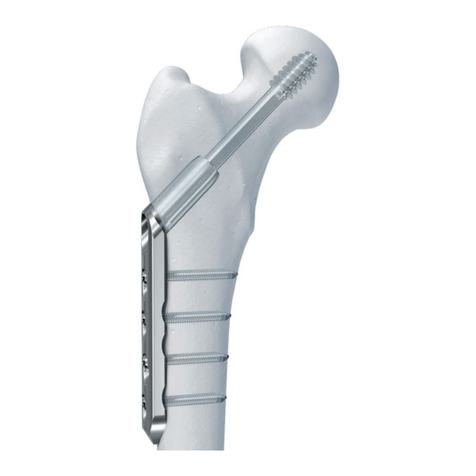
Synthes
Synthes DHS SURGICAL TECHNIQUE
